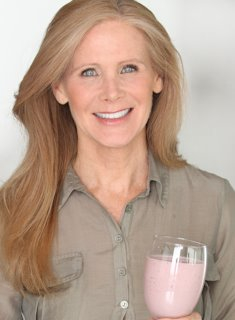Now that summer is over and we are all back at work or school, it is time to think about having a breakfast that really gets us going for the day in the most beneficial way! When we get up in the morning, we are breaking a fast. Our bodies are so empty, that whatever we put into our stomach will be absorbed like a sponge. We are like a car with no gas in it. Because we need more nutrients in the morning to get started, breakfast is our most important meal.
How often are we in a hurry or don’t feel like preparing this meal or cleaning up afterward? Instead, many of us reach for cereal, protein or fiber breakfast bars, or other easy-to-prepare, easy-to-eat foods.
I grew up eating cereal and milk for breakfast, so I understand how simple and yummy it can be. I’ve since discovered these aren’t the best choices. Why? Because many cereals on the market today can have high amounts of sugar, which is a main contributor to obesity, diabetes, and heart disease. In particular, I’m addressing added sugars, not those found naturally in fruits or whole unprocessed foods. (When whole dried fruits are added to foods, they do raise the number of sugar grams, so be aware of that.)
Our bodies simply don’t handle sugar well. In fact, sugar affects us like an addictive drug. It can even make us sick!
According to Yale Health Newsletter,[i] a child should be limited to 3 to 4 teaspoons of added sugar a day, and an adult to 5 teaspoons a day. However, many people are consuming as many as 22 to 34 teaspoons of sugar a day.[ii] (Note: Four grams of sugar equals one teaspoon.)
Here’s a key problem with any amount of added sugar. According to the American Journal of Clinical Nutrition[iii], one teaspoon of added sugar shuts down a person’s immune system for up to five hours. So, if we eat a sugary breakfast and then go off to work or school, what happens? Our immune system can stop functioning shortly after we arrive. Is it any wonder that we or our children come home sick or exhausted?
I suggest purchasing only the highest quality cereal with the fewest number of additives. Sometimes my choice centers on budget or time constraints, but I certainly make the best choice I can in the moment.
Let’s examine the array of breakfast cereals available and determine the healthiest choices based on their ingredients. Although sugar is the main ingredient to be mindful of, watch for other ingredients as well.
When you’re grocery shopping, follow these steps:
1. Before leaving for the grocery store, take your reading or magnifying glasses, and be prepared to read the list of ingredients on the packages.
2. When reading ingredient lists, look at how big a serving the packaging shows, related to the amounts being analyzed. For example, some cereals show “½ cup” as the serving amount and others say “1 cup.” If you are eating 1 cup and the amount measured is only ½ cup, you need to calculate double the amount of sugar stated in the serving. To compare products, you may have to do a little math, but it’s worth the effort.
3. As you read the ingredients, notice if the grains are listed as “whole” grain” or “sprouted whole grain.” Sprouted grains or seeds are easier to digest than whole grains.
4. Also read the front of packages, which can be quite deceiving. The descriptions can say the cereal contains whole grains, but it may hardly contain any “whole” grains at all. If whole grains are in the product, then the manufacturer can legitimately say so in large print on the front of the package. You have to check and make certain the ingredient list reflects what’s being claimed on the packaging.
5. Take notice of the first 4 to 6 ingredients. They are listed by “most to least” of how much the product contains. If sugar is listed among these first ingredients, you know the cereal is high in added sugar. Also notice what type of sugar has been added. Is it a high fructose corn syrup, corn syrup, cane sugar, agave nectar, date sugar, rice syrup, molasses, fruit juice concentrate, xylitol, honey, or stevia? In my opinion the xylitol, stevia and honey are less harmful as a sweetener than the others, so choose those options.
6. Notice if the product has hydrogenated oils. Any fat that’s been hydrogenated or molecularly changed is called a trans-fat, which makes it a “bad” fat in even the smallest amount. Never purchase a cereal with this type of fat listed in its ingredients.
7. Look to see if the list includes any natural flavorings, added food color, or preservatives such as BHT or BHA. (The University of California Berkeley’s Wellness Report[iv] says to avoid these completely.) Preservatives, color additives, monosodium glutamate or MSG (frequently listed as natural flavorings, spices, and hydrolyzed proteins) are also to be avoided.
8. Select the brand that has the least amount of sugar and the most whole grains and/or sprouted grains that are (preferably) non-GMO (GMO means the ingredients have been modified genetically.)
Practice checking the specifics in the ingredients so that you can make more educated and healthier choices for your family.
I’ve compiled a short list of cereals, food bars, and non-dairy milks with the grams of sugar listed for each one. This allows you to see how many of the cereals that “look” healthy can have high sugar content. Special note: Don’t assume that because a product is found on the shelf in a “healthy” grocery store that it’s necessarily healthy.
Cereals with Lowest Amounts of Sugar
The following brands of cereal have the least amounts of sugar:
Ezekial 4:9 – Original ½ cup has 0 gram
Ezekial 4:9 – Almond 1 cup has 2 grams
Post Shredded Wheat – Original 1 cup has 0 gram
General Mills Cheerios – Original 1 cup has 1 gram
Arrowhead Mills – Sprouted Corn Flakes (gluten free) 1 cup has 1 gram
Arrowhead Mills – Shredded Wheat (bite-size) 1 cup has 2 grams
General Mills Kix – Original 1¼ cup has 3 grams
Cereals with Most Amounts of Sugar
The following brands of cereal have the most amounts of sugar:
Post Grape Nuts 1 cup has 10 grams
Kellogg’s Fruit Loops 1 cup has 12 grams
General Mills Cocoa Puffs 1 cup has 12.5 grams
Cascadian Farms Granola 1 cup has 13 grams
General Mills Raisin Nut Bran 1 cup has 17.5 grams
Kellogg’s Cracklin’ Bran 1 cup has 17.5 grams
Back to Nature, Sunflower & Pumpkin Seed Granola 1 cup has 22 grams
Back to Nature, Sunflower & Pumpkin Seed Granola 1 cup has 22 grams
Udi’s Gluten Free Granola, Cherry Walnut 1 cup has 32 grams
Nature’s Path, Fruit and Nut Granola, gluten-free 1 cup has 32 grams
So, let’s look at this. If four grams is one teaspoon, then 32 grams of sugar in one cup of cereal is 8 teaspoons of sugar! Can you even imagine putting that much sugar into your bowl of cereal?!
Oatmeal
Plain oatmeal has less sugar than cereals:
Whole Foods, 365, Instant hot oatmeal (multigrain with flax) 1 packet has 0 grams
Bob’s Red Mill, Old Fashion Rolled Oats, whole grain ½ cup has 1 gram
Food Bars
Many people think food bars are easy and they grab them for breakfast. Be aware that these food bars (like cereal in a bar form) have the following amounts of sugar:
Cliff Bars 1 bar has 5 grams
Kind, Maple Pumpkin Seeds 1 bar has 6 grams
Earth’s Best Sunny Days, strawberry 1 bar has 6 grams
Glutino, Apple, gluten free 1 bar has 17 grams
Dairy-Free Beverages
Pouring milk on cereal can add an additional amount of sugar to the food, so purchase milk or milk alternatives that have no added sugar and are low in natural sugar. I use unsweetened vanilla alternative milk and add my own stevia or sweetener. By doing this, I take control of the type of sweetener in my milk. These dairy-free milks have the following amounts of sugar:
Pacific Brand, unsweetened, vanilla hemp non-dairy beverage
1 cup has 0 grams of sugar
Whole Foods, 365, unsweetened, rice milk
1 cup has 0 grams of sugar
Dairy-free coconut milk, unsweetened
1 cup has 1 gram of sugar
Buying Bulk
Bulk foods can be a good way to purchase foods less expensively than packaged foods. Still, I was shocked to find high amounts of sugar in products I expected would be sold in raw and natural form. So even when buying bulk foods, read the labels well. Most of the fruits, granolas, crackers, nuts, and more have added sugar.
Cut out as much added sugar from all of your meals when you can, and your family’s health can really benefit from that choice.
copyright@nancyaddison2014. Excerpt from the triple award-winning, best-selling book, “Raising Healthy Children” by Nancy Addison.
For more information go to: www.organichealthylifestyle.com
[i] Yale Health Newsletter. “Be a Sugar Detective.” http://yalehealth.yale.edu/sugardetective[ii] Ibid.
[iii] Albert Sanchez, J. L. Reeser, H. S. Lau, P. Y. Yahiku, R. E. Willard, P. J. McMillan, S. Y. Cho, A. R. Magie, and
U. D. Register. “Role of sugars in human neutrophilic phagocytosis.” The American Society for Clinical Nutrition, Inc. 1973. http://ajcn.nutrition.org/content/26/11/1180.abstract
[iv] University of California. Berkeley Wellness Report. “Two Preservatives to Avoid.” February 01, 2011. http://www.berkeleywellness.com/healthy-eating/food-safety/article/two-preservatives-avoid






Thanks a lot for sharing these valuable tips, Nancy!
The best way to avoid processed ingredients and harmful additives altogether is to make your meals at home with whole, natural ingredients. Your point about plain oatmeal hits the spot!
It’s super-easy to make nutritious breakfast cereals with oatmeal (or other whole grains), seeds, nuts, some fresh/dried fruits, cinnamon, etc. I use 3-4 different types of grains, seeds, and nuts to make many different varieties.
Thanks again and best wishes!